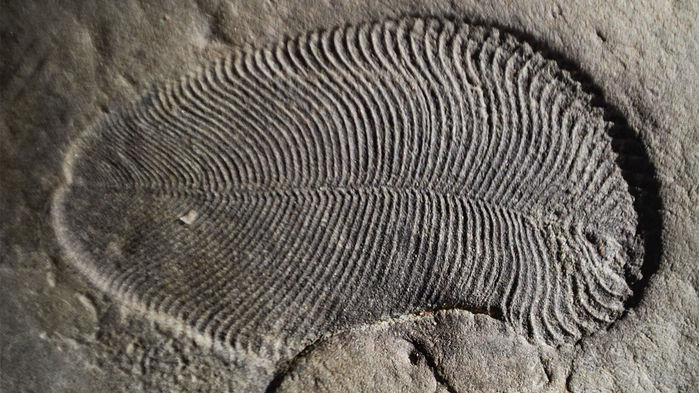
The world is filled with mysterious creatures and it is obvious that earth was also the resident of ancient unknown animals. Scientists now have discovered the earliest confirmed animal in the geological record that lived 558 million years ago.
A study published on Thursday, September 20 in the journal Science, has revealed that research team led by Australian National University scientists has done this outstanding discovery and stated that this is the oldest animal, which used to live on earth's surface, belonged to a strange creature called Dickinsonia.
Scientists found the molecules of fat in an ancient fossil of the oval-shaped Dickinsonia, which grew up to 1.4 metres in length. The well-preserved remains were discovered in a remote area near the White Sea in the northwest of Russia.
This ancient animal with rib-like segments running along its body was part of the Ediacaran biota, which used to be alive almost 20 million years earlier to the "Cambrian explosion" of modern animal life that is when the complex animals and other microscopic organisms, such as molluscs, worms, arthropods and sponges, began to dominate the fossil record.
The researchers stated that the tissue still contained molecules of cholesterol, which is a type of fat that is the main evidence of animal life.
The lead researcher of this study, Dr Jochen Brocks said the newly found fossil fat molecules have proved that "animals were large and abundant 558 million years ago, millions of years earlier than previously thought."
In addition, he also said, "Scientists have been fighting for more than 75 years over what Dickinsonia and other bizarre fossils of the Ediacaran Biota were: giant single-celled amoeba, lichen, failed experiments of evolution or the earliest animals on Earth. The fossil fat now confirms Dickinsonia as the oldest known animal fossil, solving a decades-old mystery that has been the Holy Grail of palaeontology."
Ilya Bobrovskiy, another author of this research and the Australian researcher who discovered the fossil said that the finding took place in the middle of cliffs of the White Sea that are 60 to 100 meters high.
"I had to hang over the edge of a cliff on ropes and dig out huge blocks of sandstone, throw them down, wash the sandstone and repeat this process until I found the fossils I was after," Bobrovskiy continued.
"Most rocks containing these fossils such as those from the Ediacaran Hills in Australia have endured a lot of heat, a lot of pressure, and then they were weathered after that - these are the rocks that palaeontologists studied for many decades, which explained why they were stuck on the question of Dickinsonia's true identity," he further added.
In terms of palaeontology, researchers usually the structure of fossils, but in this case, researchers analysed molecules inside it.
The research team included researchers from Australia who collaborated with scientists from Russian Academy of Science and Max Planck Institute for Biogeochemistry and the University of Bremen in Germany to discover this oldest ancient animal.









